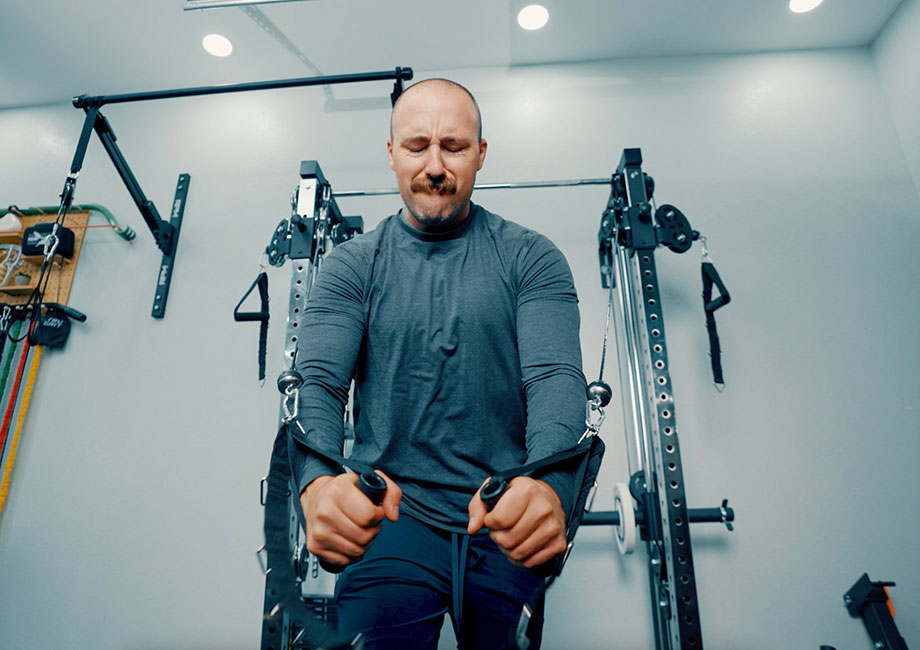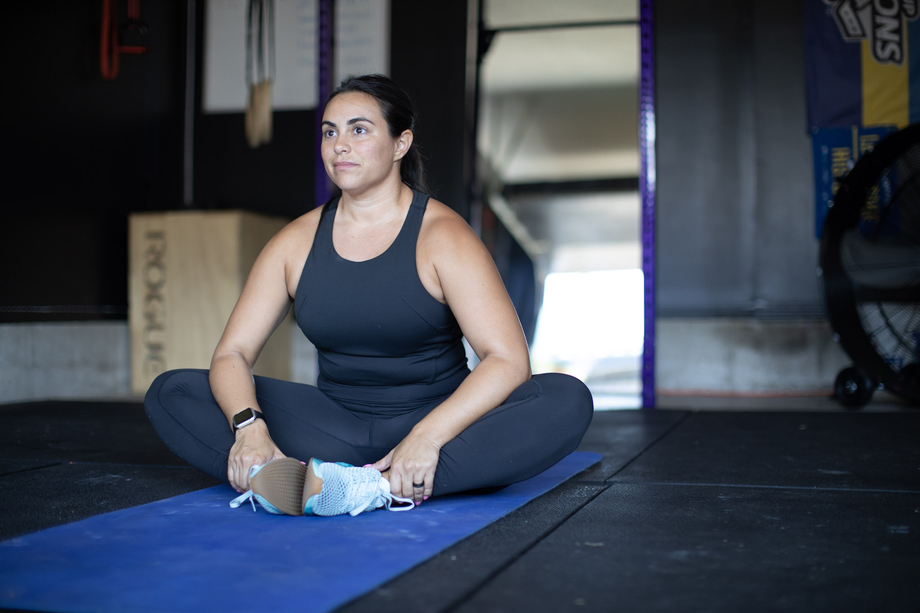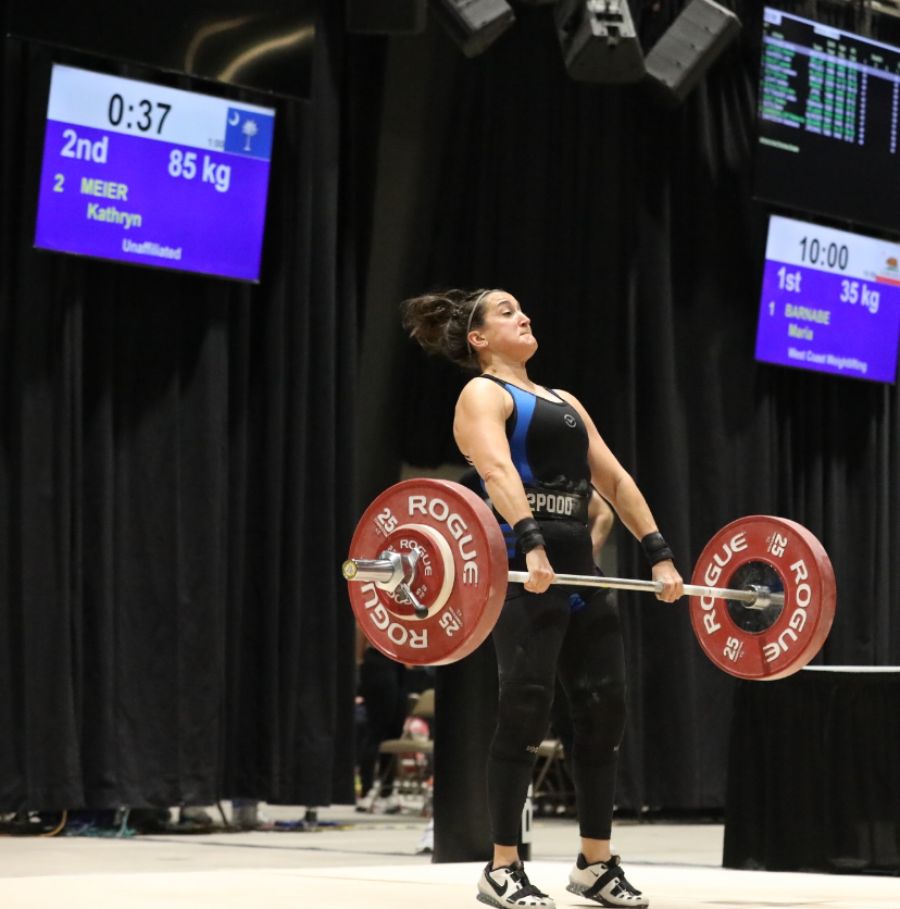There are many fantastic exercises to strengthen and add muscle to the chest, like the barbell and dumbbell bench press variations. These should form the basis of your chest workout routine, but don’t sleep on cable crossover exercise. The cable crossover exercise has a few advantages over the bench press.
With the cable machine, you can easily switch between the high, middle, and low cable crossover to train the pectoralis major from different angles. Doing this strengthens all the chest muscle fibers for better muscle development. Second, the cable machine provides constant tension throughout your range of motion, something the dumbbell and barbell variations don’t do.
RELATED: Cable Chest Workout
More tension = more muscle growth.
Have you got it? Good. Now, I’ll dive into everything cable crossover so you can get the best out of this popular chest exercise that everyone, from beginners to bodybuilders, can benefit from.
How to Do the Cable Crossover Exercise
- Set the D-handles at the highest level at both ends of the cable crossover machine.
- Stand in the center of the cable machine in your preferred stance and take hold of both handles with your palms facing each other.
- Lean your upper body slightly forward, keeping a soft bend in your elbows and a neutral spine.
- Engage your core, and with shoulders down, pull the handles down and across your body and squeeze the chest at lockout.
- Slowly raise to the starting position, reset, and repeat.
Note: The high cable crossover variation, sometimes referred to as the cable iron cross, is described. Plus, this exercise can be performed with two resistance bands if you don’t have access to a cable station.
RELATED: Best Resistance Bands
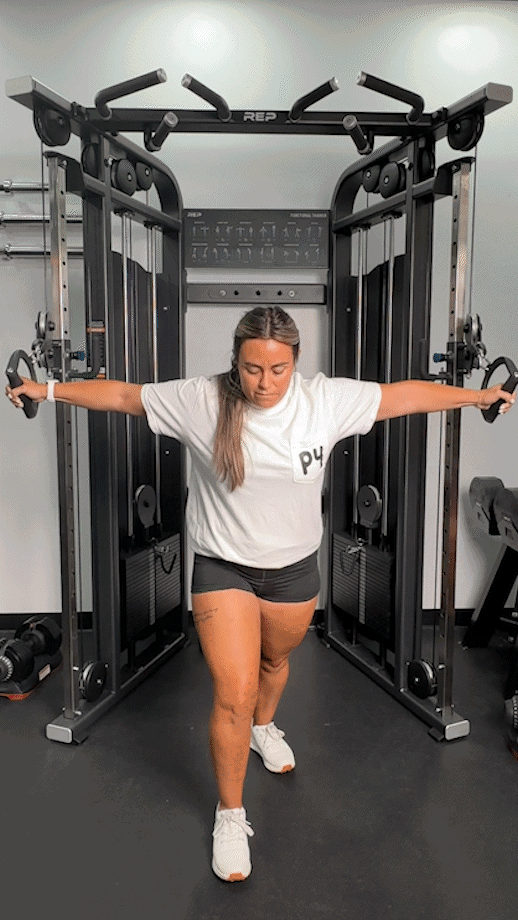
Trainer Tips on Form
The cable crossover is not a technical exercise like the barbell bench press, but it helps to do it with good form so you can get the best out of it. Here, this certified personal trainer (CPT) gives you some freshly minted tips for your muscle-building pleasure.
Choose the Correct Height
The three main variations for the cable crossover are low, middle, and high. The low variation works the upper and inner chest, the middle variation works all of the chest, and the high variations train the lower chest. Choose the one that works best for you and your goals.
RELATED: Low Chest Workouts
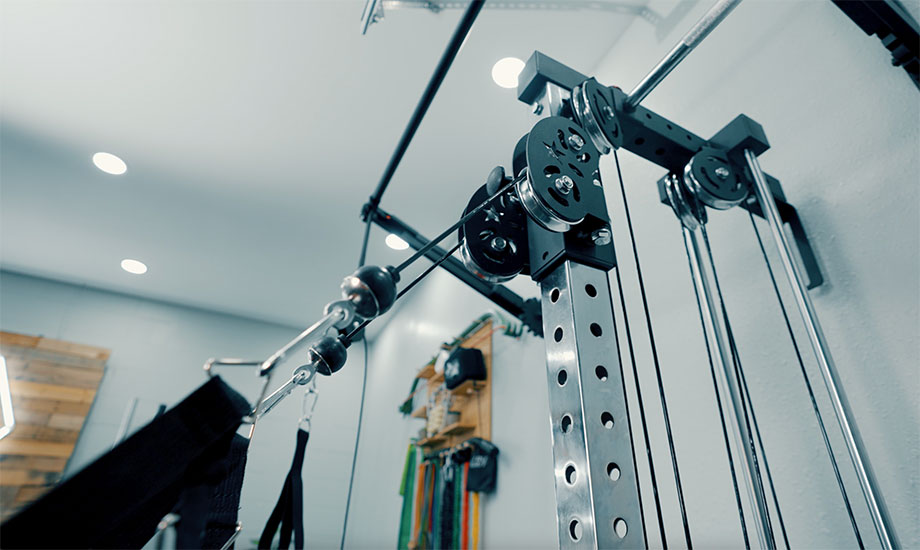
Get into Position
Once you have the cable position set, grab each cable handle and step forward to separate the weight stack and lean your torso forward, brace your core, and keep your shoulders down and chest up.
Squeeze It
From the low, middle, or high position, draw your arms across your chest toward the midline until you feel an intense muscle contraction in your chest. Finish with one hand, then the other, and alternate which hand crosses above and below.
RELATED: Best Functional Trainers
Common Cable Crossover Exercise Mistakes
The biggest mistake lifters make with exercises like the cable crossover is adding too much weight. When the ego takes over, form deteriorates, muscle tension is lost, and the injury risk is higher. None of that is good, so instead, avoid these common cable crossover mistakes to get the best out of this exercise.
Too Much Momentum
Whether you perform the low, middle, or high cable crossover, you must avoid swinging the upper body back and forth to generate momentum. Doing so removes the muscular tension from the chest, and your lower back might not like you for it.
RELATED: Upper Chest Workout
Don’t Forget to Cross Your Hands
It is called the cable crossover for a reason. Failing to cross your hands after every rep is cheating yourself on the juicy muscle-building range of motion, and you don’t want to do that, correct?
Too Much Elbow Bend
Too little or no elbow bend stresses your elbow and shoulder joints. Too much elbow bend shifts the emphasis to the biceps, not the chest. Instead, just a soft bend in your elbows will solve both issues.
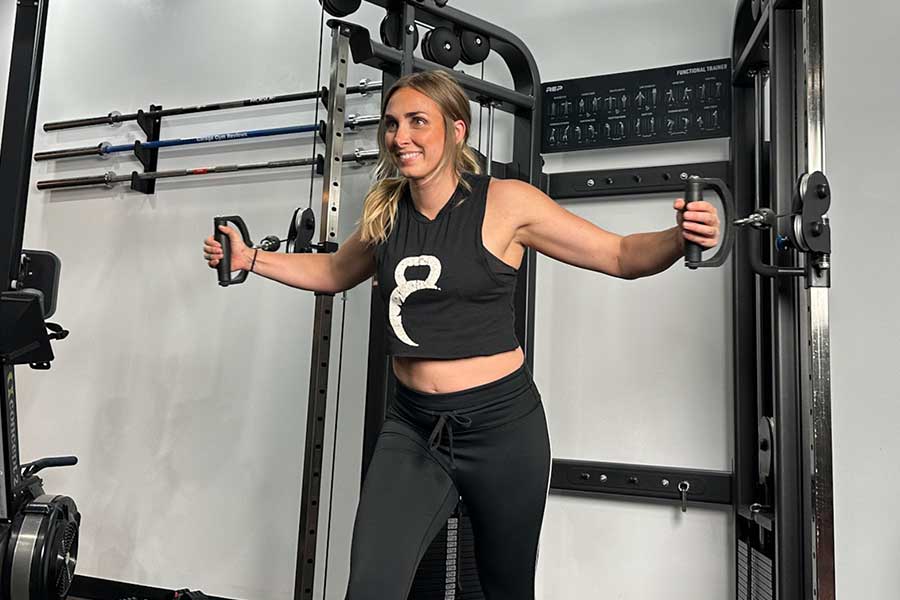
Cable Crossover Benefits
The beauty of the cable machine is the constant tension through the range of motion. The weight feels the same at the start and end and everywhere. This continuous tension gives you hypertrophy benefits at a lower resistance. Here are a few more benefits of the cable crossover exercise.
Trains The Chest From Different Angles
Other chest exercises do the same thing, but changing the high from low to high to anywhere in between with the cable machine is easy. This ease of transition and varying angles give you better muscle-building development of the chest.
Fantastic Chest Isolation Exercise
Many chest exercises involve the triceps but not the cable crossover. Because of this, you will use less weight but focus more on the pecs for better chest-building gains.
RELATED: Chest and Tricep Workout
Cable Crossover Exercise Variations
To avoid exercise boredom and add muscle-building variety to your chest-building workouts, take these cable crossover variations out for a spin.
Single-Arm Cable Fly
Why do it: Like almost all unilateral exercises, the single-arm crossover strengthens imbalances between sides and helps improve your core stability.
How to do it:
- Choose the low, middle, or high position and grip the D-handle tight.
- Step forward to separate the weight stack with your feet shoulder-width apart.
- Lean your torso forward and, with your chest up and shoulders down, draw your arm across your body to your midline.
- Once you have reached lockout, return slowly to the starting position, reset, and repeat.
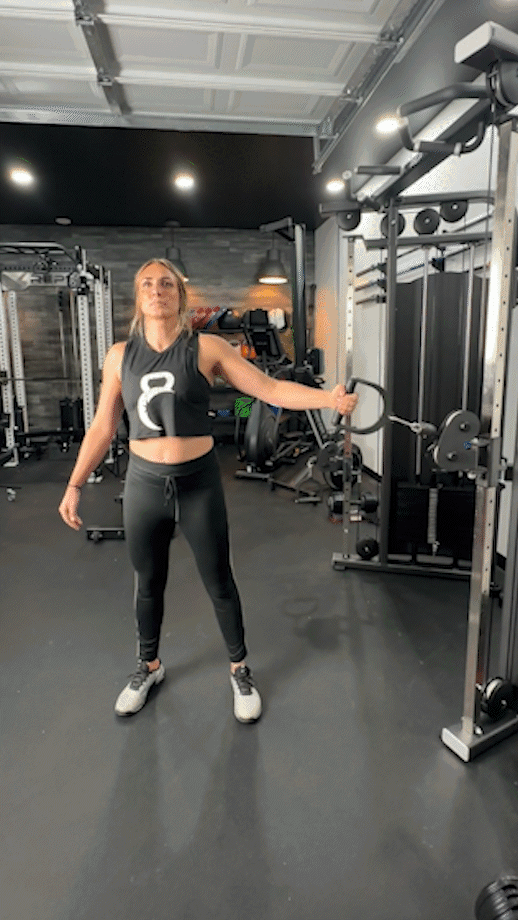
Decline Cable Crossover (Decline Cable Chest Fly)
Why do it: Lying on a decline bench makes it harder to set up the movement, but you make up for it with less cheating and more muscle-building range of motion.
How to do it:
- Place the decline bench in the middle of the cable machine and set the cable handles at their lowest point.
- Grip each handle with your hands together and lie back on the decline bench.
- Lower your hands towards the floor with a slight bend in the elbows until you feel a stretch in the chest.
- Draw both hands to midline, feeling muscle contraction in your chest.
- Lower to the starting position, reset, and repeat.
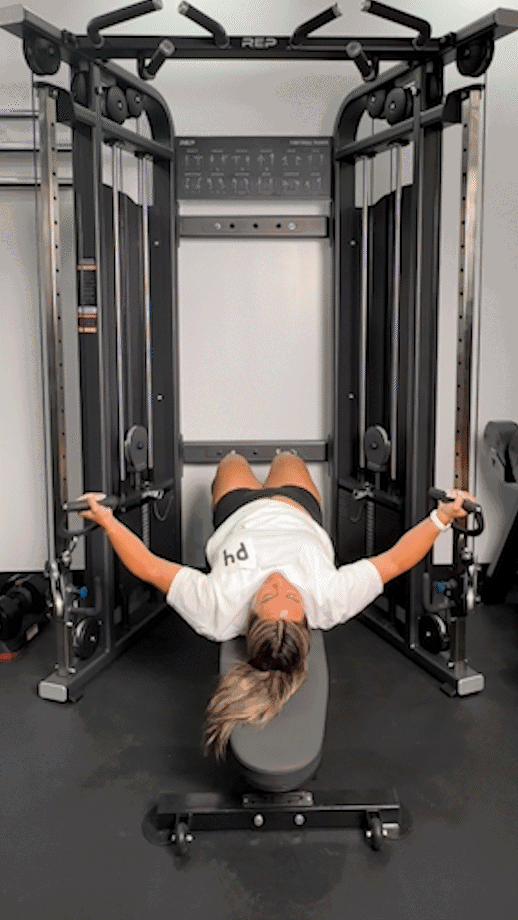
Reverse Cable Crossover (Reverse Cable Flyes)
Why do it: This movement is the opposite of the cable crossover, and works the upper back muscles and posterior deltoid for a thicker back and better posture.
How to do it:
- Set the cable pulley at chest height and grip the right stack with the left hand and the left stack with the right hand.
- With your arms crossed over and straight, lower your shoulders down and lift your chest.
- Initiating the move with your upper back, perform a reverse fly until your arms form a T
- Reverse to the starting position, reset, and repeat for desired repetitions.
RELATED: Exercises for Upper Back

Cable Crossover Exercise: FAQs
What muscles does the cable crossover work?
Cable crossovers work the muscle groups on the front of your chest (pecs) and anterior delts, no matter the variation.
Should cable crossovers be high or low?
The high cable crossover focuses on the lower pectorals and anterior deltoids, while the low cable crossover emphasizes the inner and upper chest. Which one you choose depends on your goals, but they can both have a place in your workout routine.
Are cable crossovers suitable for beginners?
Cable crossovers are not the most challenging exercise, like a barbell deadlift or squat, and are excellent for beginners who want to focus on building their chest. Beginners should lighten the weight at first and focus more on form and tension in their chest muscles.
Do cable crossovers build mass?
Due to the extensive range of motion and the constant tension, cable crossovers are a fantastic exercise to build mass in the chest muscles when performed with proper form.
RELATED: How to Build Muscle


